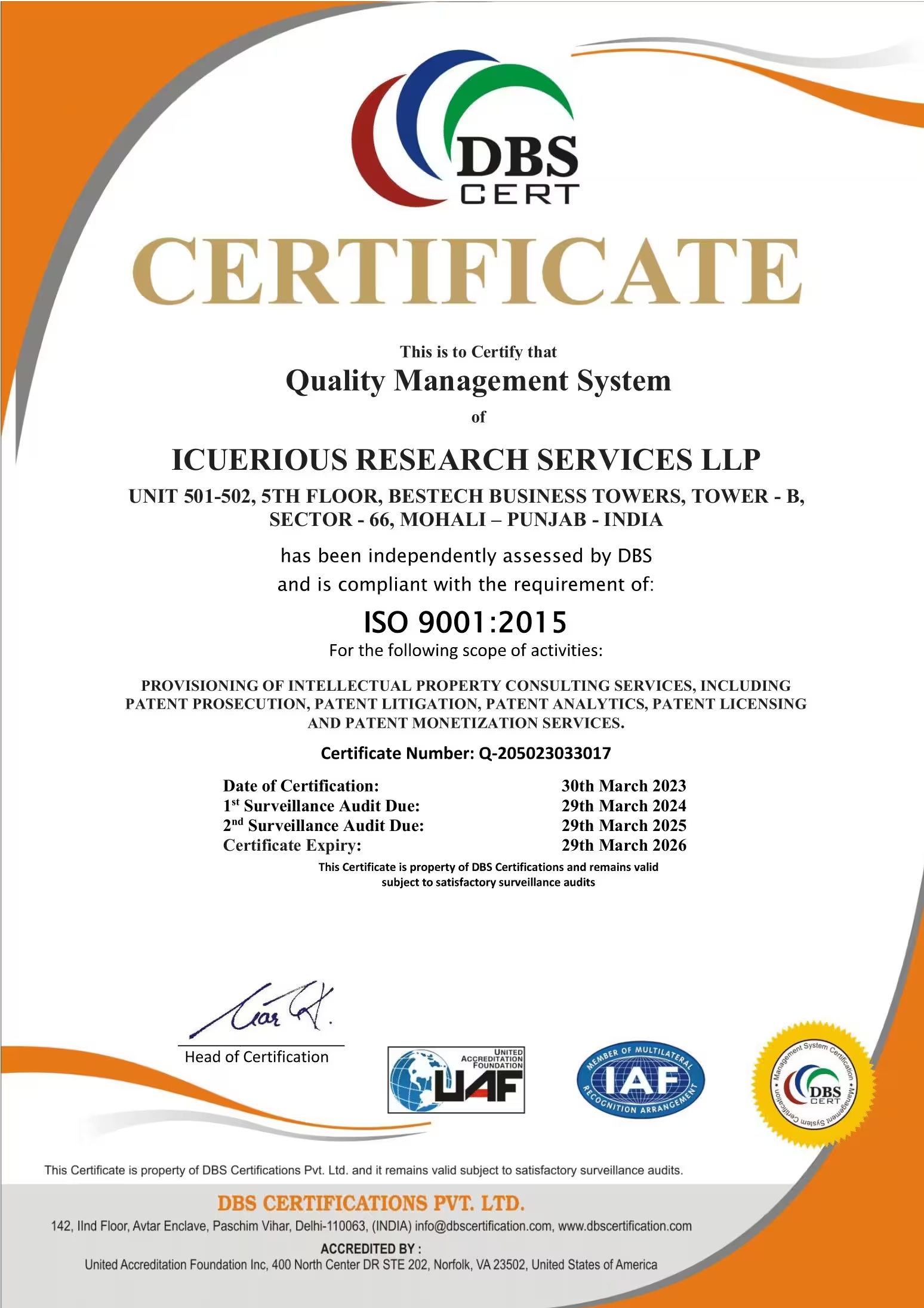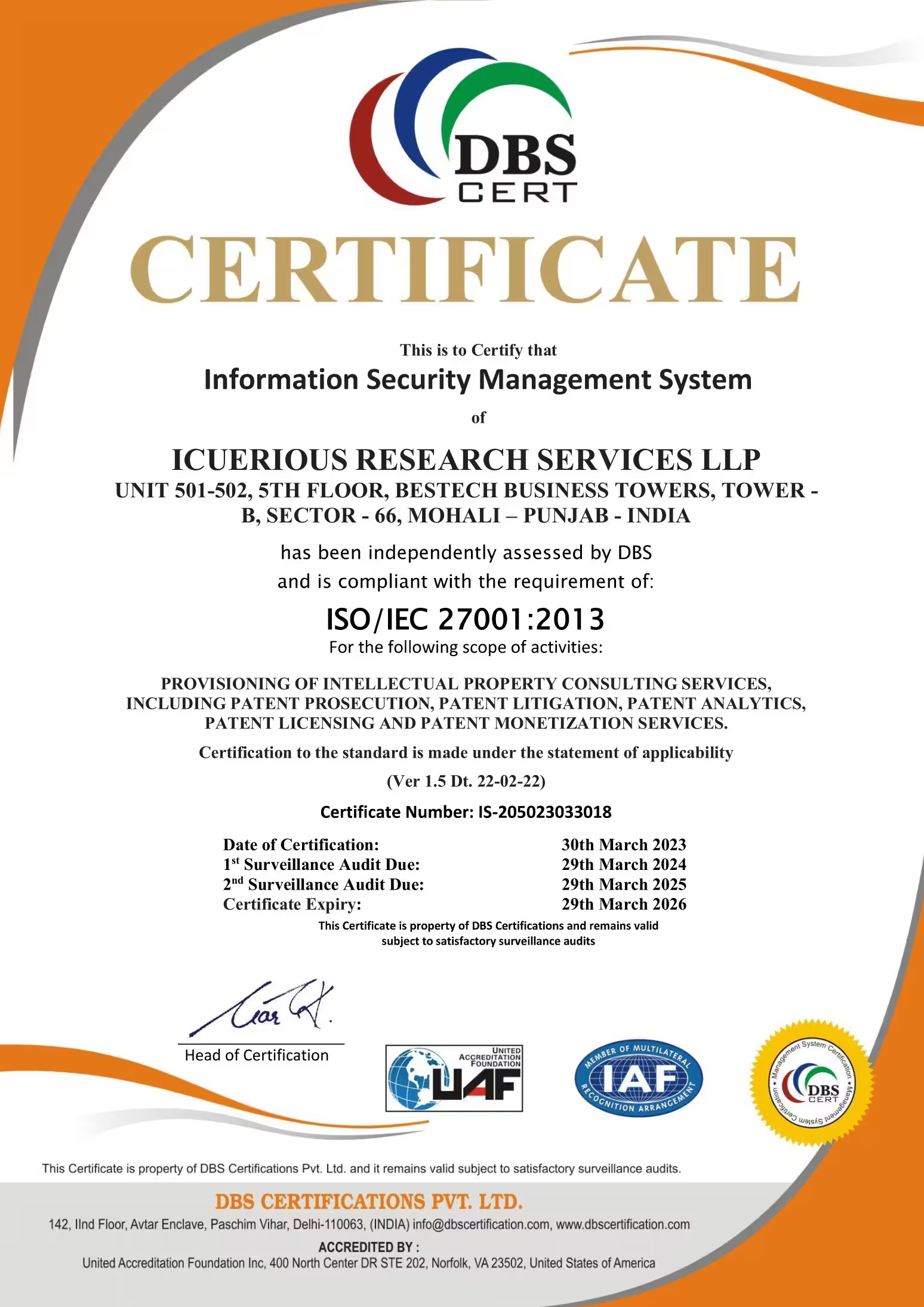Sensing the Future (Overview)
4th September 2025
00 Mins Read
Sensing the Future: How Touchless Technology is Revolutionizing Healthcare
The healthcare landscape is rapidly evolving, driven by innovations that prioritize patient comfort, safety, and accessibility. Among the most transformative of these is touchless sensing technology, which utilizes vision, motion, and sound to monitor and analyze health parameters without physical contact. This unobtrusive approach is poised to redefine how we care for patients, diagnose conditions, and promote overall well-being, offering a glimpse into a future where healthcare is seamless, remote, and proactive.
This Technology Overview Report (TOR) explores the technologies involved in touchless sensing for health monitoring of humans as well as animals. It further explores the key market developments and the patent filings for the contactless monitoring of various health/ behavioral parameters.
Driven by strong patent activity, strategic collaborations, and acquisitions, this dynamic sector is fundamentally reshaping market dynamics and the future outlook of the healthcare industry. This report provides a deep dive into the associated technology trends, profiles leading industry players and patent assignees, and examines current market opportunities alongside the latest innovations- from improving the data privacy of user health metrics to easily using a face scan from a smartphone to diagnose over 100 medical parameters.
Technology Overview
For anyone seeking to understand the current state and future promise of touchless health monitoring, this TOR provides actionable insights, strategic guidance, and a comprehensive overview of the businesses, technologies, and market forces reshaping the proactive healthcare industry.
The Rise of Touchless Sensing
Traditional health monitoring often involves cumbersome wires, wearable devices, or frequent visits to clinical settings. Touchless sensing offers a compelling alternative by leveraging advanced technologies to gather health insights from a distance. This is achieved through three primary modalities:
- Vision-based sensing: This approach employs cameras, depth sensors, and infrared (IR) technology to detect visual cues from the body. It can be used to monitor posture, vitals, detect falls, analyze micro-movements, and even assess emotional state.
- Motion-based sensing: Radar, ultrasonic, and radio frequency (RF) signals are used to sense body movements without contact. This technology can track vital signs like heart rate and breathing rate, monitor sleep patterns, and detect subtle changes in gait or activity levels.
- Sound-based sensing: This modality analyzes ambient sounds, such as snores, coughs, and voice patterns, to infer health-related information. It can be used to detect respiratory problems, monitor sleep apnea, and even assess mental and emotional well-being.
Advantages of Touchless Health Monitoring
- Non-Invasive and Comfortable: Eliminating the need for physical contact makes monitoring more comfortable and convenient for patients. Cameras, microphones, and sensors operate discreetly in the background, minimizing disruption to daily life.
- Remote Monitoring: Touchless sensing enables continuous health monitoring from the comfort of one's home or any remote location. Smartphones, TVs, and ambient sensors can track vital signs without requiring a visit to a clinic.
- Early Warning Detection: Vision and sound-based technologies can detect subtle signs of health issues, such as minor posture changes, breathing irregularities, or tone shifts, before symptoms escalate. This allows for early intervention and potentially prevents serious health complications.
- Reduced Infection Risk: By removing the need for physical contact, touchless sensing minimizes the risk of infection, which is particularly crucial in sterile environments like intensive care units (ICUs) and during outbreaks.
Leading Innovators in the Field
Several key players are driving innovation in the touchless sensing space, each developing unique technologies and solutions that are redefining how we monitor health and well-being without physical contact, including:
- Neteera: Offers contactless patient monitoring solutions using high-frequency radar to monitor heart rate, breath rate, bed exit activity, and position changes.
- Binah.ai: Provides an AI-powered, video-based platform that enables measurements of various health indicators, such as heart rate, oxygen saturation, and blood pressure, using a smartphone or tablet camera.
- VetGuardian (Powered by Vero Biotech): Provides contact-free respiratory monitoring for veterinary patients, leveraging Vero's sensing technology to detect distress remotely, reducing animal stress and improving care.
Applications Across Healthcare and Beyond
- Remote Patient Monitoring: Continuous monitoring of vital signs and activity levels for patients with chronic conditions, allowing for proactive intervention and reduced hospital readmissions.
- Elderly Care: Fall detection, activity monitoring, and sleep analysis to ensure the safety and well-being of elderly individuals living at home.
- Infant Monitoring: Contact-free monitoring of babies' breathing and heart rate.
- Mental Health: Analysis of voice patterns and facial expressions to detect signs of depression, anxiety, or stress.
- Automotive: Driver monitoring systems that detect drowsiness or distraction to prevent accidents.
- Animal Health: Monitoring livestock behavior and detecting early signs of illness or distress.
Recent Market Developments and Innovations
Strategic Acquisitions and Collaborations Shaping the Future
- Tech and Healthcare Integration via Partnerships: The partnership between NE Device SW and Sehat Kahani exemplifies this trend. A tech company specializing in video-based vital sign measurement is partnering with a telehealth provider to bring contactless measurement to underserved communities, expanding access to care.
- Sensor Company Acquisitions Drive Market Expansion: HARMAN's acquisition of CAARESYS and Zomedica's acquisition of VetGuardian demonstrate this strategy. Larger companies are acquiring specialized sensor technology to expand into new markets - HARMAN into automotive safety/comfort, and Zomedica into advanced veterinary monitoring.
- AI-Enabled Touchless Solutions on the Rise: Partnerships like Endava and Binah.ai highlight this trend. AI is increasingly crucial for extracting meaningful and actionable insights from the data gathered by touchless sensors, turning raw data into valuable health information.
- Clinical Validation Through Collaboration is Key: Collaborations, like that between Clario and Sleepiz AG, which are focused on incorporating sleep and respiratory data collection into clinical trials, are essential. This ensures accuracy and reliability of the touchless sensing technologies, paving the way for wider adoption and regulatory approvals.
Challenges and Future Directions in Touchless Sensing
Key Challenges
One of the foremost concerns is data privacy. Because these systems often capture sensitive health-related information, robust security protocols are essential to safeguard patient trust and comply with regulations.
Another challenge lies in accuracy and reliability. While progress has been impressive, continued research and development are required to minimize errors and improve consistency across real-world environments. This will demand advances not only in sensor design but also in artificial intelligence and data analytics. Notably, the patent landscape for touchless sensing surged during 2020 and 2021, driven in part by COVID-19, which accelerated the pace of innovation in this space.
Emerging Trends
- Greater Accuracy & Reliability: Breakthroughs in radar, computer vision, and AI-driven noise filtering are making vital sign monitoring more precise and robust.
- Miniaturization & Seamless Integration: Sensors are becoming smaller, more energy-efficient, and easier to embed into everyday devices—from smartphones and wearables to smart furniture—enabling health monitoring anytime, anywhere.
- Focus on Mental Health: Companies are extending applications beyond physical health, using touchless sensing to interpret facial expressions, voice tones, and gestures to assess mood, stress, and cognitive state.
- Veterinary Applications: Expanding into animal health, solutions like VetGuardian allow remote monitoring of pets and livestock, reducing stress from traditional diagnostic methods.
- Edge Computing Adoption: Moving data processing closer to the source enhances privacy, reduces latency, and enables quicker intervention during critical events such as falls or breathing irregularities.
Conclusion
Touchless sensing technology is poised to revolutionize healthcare by offering a more convenient, comfortable, and proactive approach to monitoring and managing health. As the market continues to grow and technology advances, we can expect to see even more innovative applications of touchless sensing emerge, transforming the way we care for ourselves and our loved ones. The future of healthcare is indeed unobtrusive, promising a world where health insights are gathered seamlessly from the environment around us.
FAQs
- Is the Use of Touchless health monitoring Evolving?
- Who are the major innovators in Touchless health monitoring?
- Are there any patents related to Touchless health monitoring?
- What’s the current focus of innovation in Touchless health monitoring?
- What are the recently market developments in Touchless health monitoring?
- Which are the top brands of Touchless health monitoring in the market?
- How will Touchless health monitoring evolve in the coming years?
- Want to explore detailed insights on the topic?
For in-depth insights into Touchless Sensing for health monitoring including the technology ecosystem in the context of IP and market, please reach out to us. iCuerious is dedicated to monitoring the latest developments in healthcare industry and uncovering insights that will help you stay competitive in this rapidly evolving industry.
Here are the contact details
Website: www.icuerious.com
For projects: info@icuerious.com
Direct Contacts: +91-(988)-873-2426 (India), +1-(339)-237-3075 (USA)


